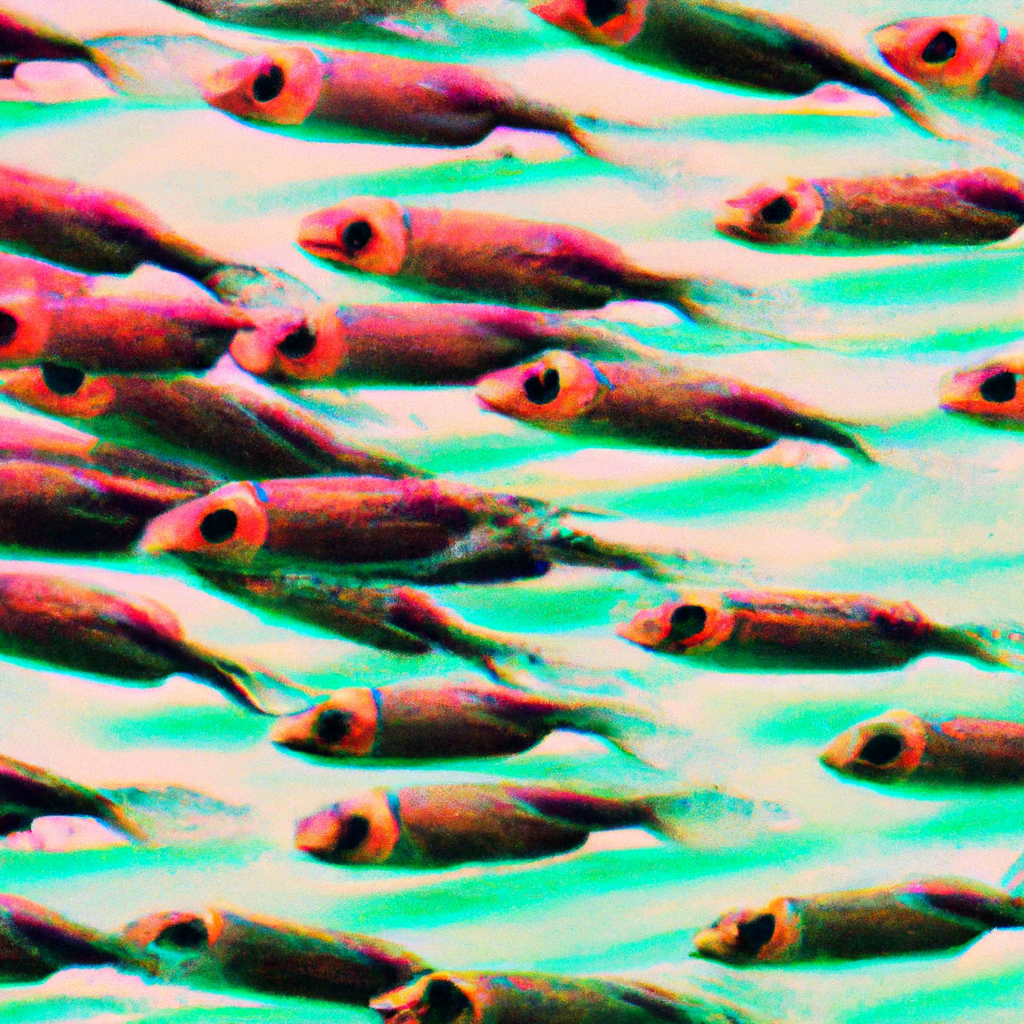
Illustrating Marine Life: Exploring the Wonders of the Ocean

The ocean is a vast and mysterious place, covering more than 70% of the Earth’s surface. It is home to a diverse range of marine life, from tiny plankton to massive whales. For centuries, artists and illustrators have been captivated by the beauty and complexity of the ocean, using their skills to bring its wonders to life. In this article, we will explore the art of illustrating marine life, its importance in education and conservation, and the techniques used by artists to capture the essence of the ocean.
The Importance of Illustrating Marine Life
Illustrations of marine life serve a crucial role in education and conservation efforts. They provide a visual representation of the diverse species that inhabit the ocean, allowing people to connect with and understand these creatures on a deeper level. By accurately depicting marine life, illustrators help scientists and researchers identify and study different species, contributing to our knowledge of the ocean ecosystem.
Furthermore, illustrations can inspire awe and wonder, sparking curiosity and interest in marine life. They can serve as powerful tools for raising awareness about the importance of ocean conservation and the need to protect fragile marine ecosystems. Through their art, illustrators can convey the beauty and fragility of the ocean, encouraging people to take action and make a positive impact.
Techniques for Illustrating Marine Life
Illustrating marine life requires a combination of artistic skill and scientific knowledge. Artists must have a deep understanding of the anatomy, behavior, and habitats of different marine species to accurately depict them. Here are some techniques commonly used by illustrators to capture the essence of the ocean:
1. Research and Reference
Before starting an illustration, artists immerse themselves in research. They study scientific literature, consult experts, and gather reference materials such as photographs, videos, and specimens. This research helps them understand the unique characteristics of each species and ensures their illustrations are accurate and informative.
2. Observation and Field Sketching
Many illustrators spend time in the field, observing marine life in its natural habitat. They make quick sketches and take notes to capture the essence of the animals they encounter. Field sketching allows artists to study the behavior and movement of marine species, which can be challenging to depict accurately from photographs alone.
3. Understanding Light and Color
Light and color play a crucial role in illustrating marine life. Artists must understand how light behaves underwater and how it affects the appearance of different species. They use a variety of techniques, such as shading, highlighting, and color blending, to create realistic and vibrant illustrations that capture the beauty of the ocean.
4. Attention to Detail
Illustrating marine life requires a keen eye for detail. Artists must pay close attention to the intricate patterns, textures, and proportions of different species. They carefully render the scales, fins, and other anatomical features to ensure their illustrations are accurate and lifelike.
Case Studies: Illustrating Marine Life
Several artists have made significant contributions to the field of marine life illustration. Let’s explore two notable case studies:
1. Ernst Haeckel
Ernst Haeckel was a German biologist, philosopher, and artist who made significant contributions to the field of marine life illustration in the late 19th century. His detailed and intricate illustrations of marine organisms, collected in his book “Art Forms in Nature,” showcased the beauty and diversity of the ocean. Haeckel’s illustrations not only served as scientific documentation but also inspired generations of artists and scientists.
2. Roger Swainston
Roger Swainston is an Australian artist known for his stunning illustrations of marine life. His book “A Guide to the Fishes of Australia” features detailed and accurate illustrations of over 1,800 fish species found in Australian waters. Swainston’s illustrations not only showcase the incredible biodiversity of the region but also serve as a valuable resource for scientists, divers, and nature enthusiasts.
The Role of Illustrations in Marine Conservation
Illustrations play a crucial role in marine conservation efforts. They can help raise awareness about endangered species, highlight the impacts of human activities on marine ecosystems, and inspire people to take action. Here are some examples of how illustrations have been used in marine conservation:
1. Endangered Species Awareness
Illustrations can draw attention to endangered marine species and the threats they face. By depicting these species in a visually striking and emotive way, artists can evoke empathy and encourage people to support conservation efforts. For example, the “IUCN Red List of Threatened Species” uses illustrations to highlight the conservation status of different species, making the information more accessible and engaging.
2. Marine Protected Areas
Illustrations are often used to promote marine protected areas (MPAs) and their importance in conserving marine biodiversity. Artists create vibrant and captivating illustrations of the diverse species found within MPAs, showcasing the beauty and value of these protected habitats. These illustrations can be used in educational materials, signage, and campaigns to raise awareness and encourage responsible tourism and fishing practices.
3. Educational Resources
Illustrations are invaluable in educational resources about marine life. They can simplify complex scientific concepts, making them more accessible to a wider audience. Illustrations can be used in textbooks, field guides, and online resources to help students and the general public learn about marine ecosystems, species identification, and conservation issues.
Summary
Illustrating marine life is a powerful way to explore and appreciate the wonders of the ocean. Through their art, illustrators contribute to education and conservation efforts, helping us understand and protect the diverse species that inhabit the sea. By using techniques such as research, observation, and attention to detail, artists create accurate and captivating illustrations that inspire awe and raise awareness. The role of illustrations in marine conservation cannot be overstated, as they play a crucial role in highlighting endangered species, promoting marine protected areas, and educating the public. As we continue to explore the mysteries of the ocean, let us not forget the important role that illustrations play in our understanding and appreciation of marine life.
